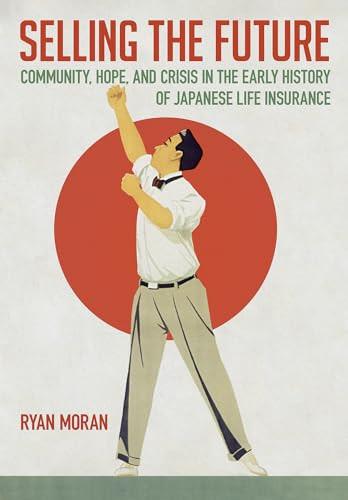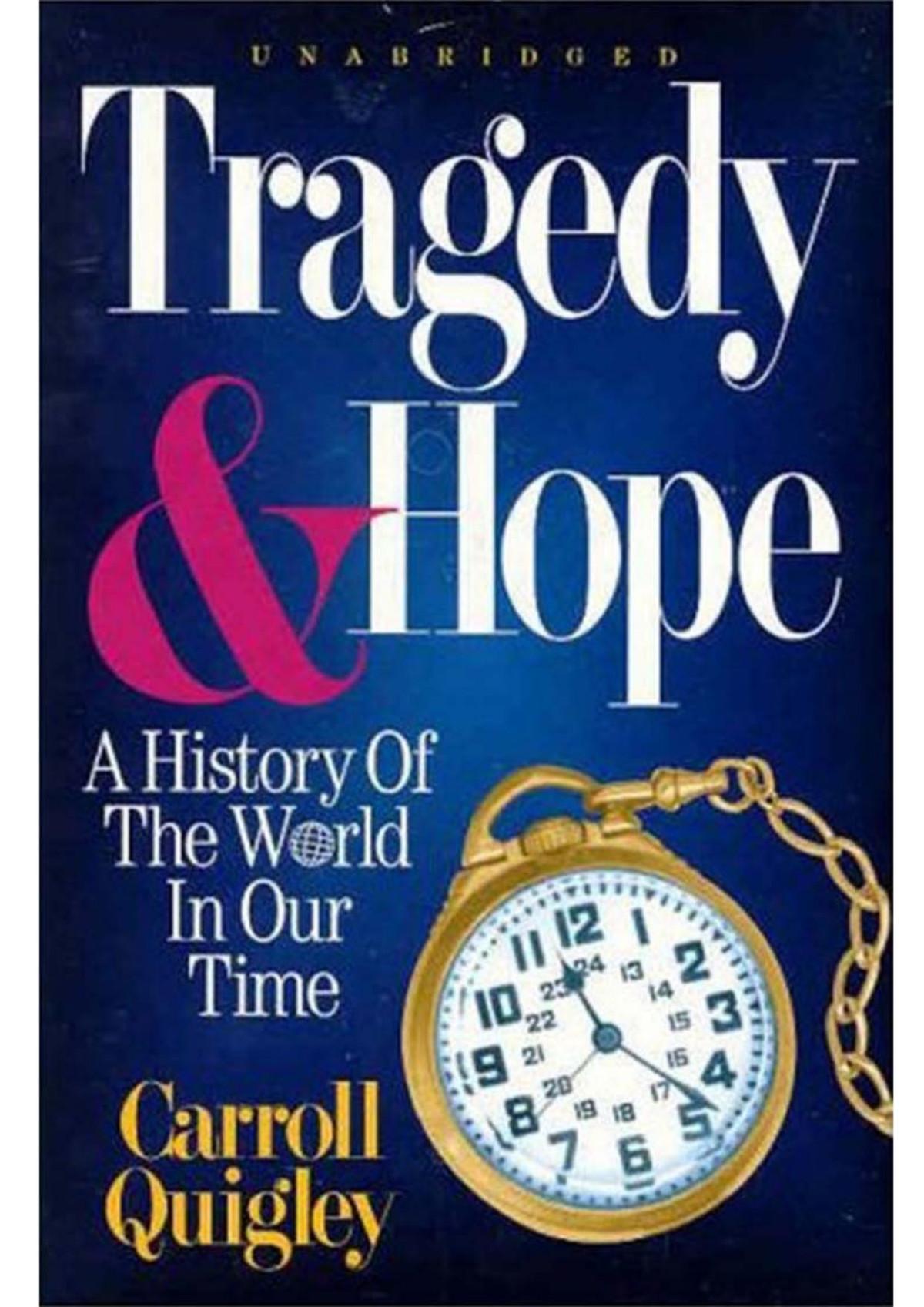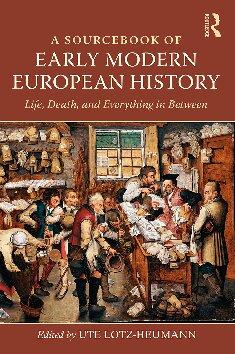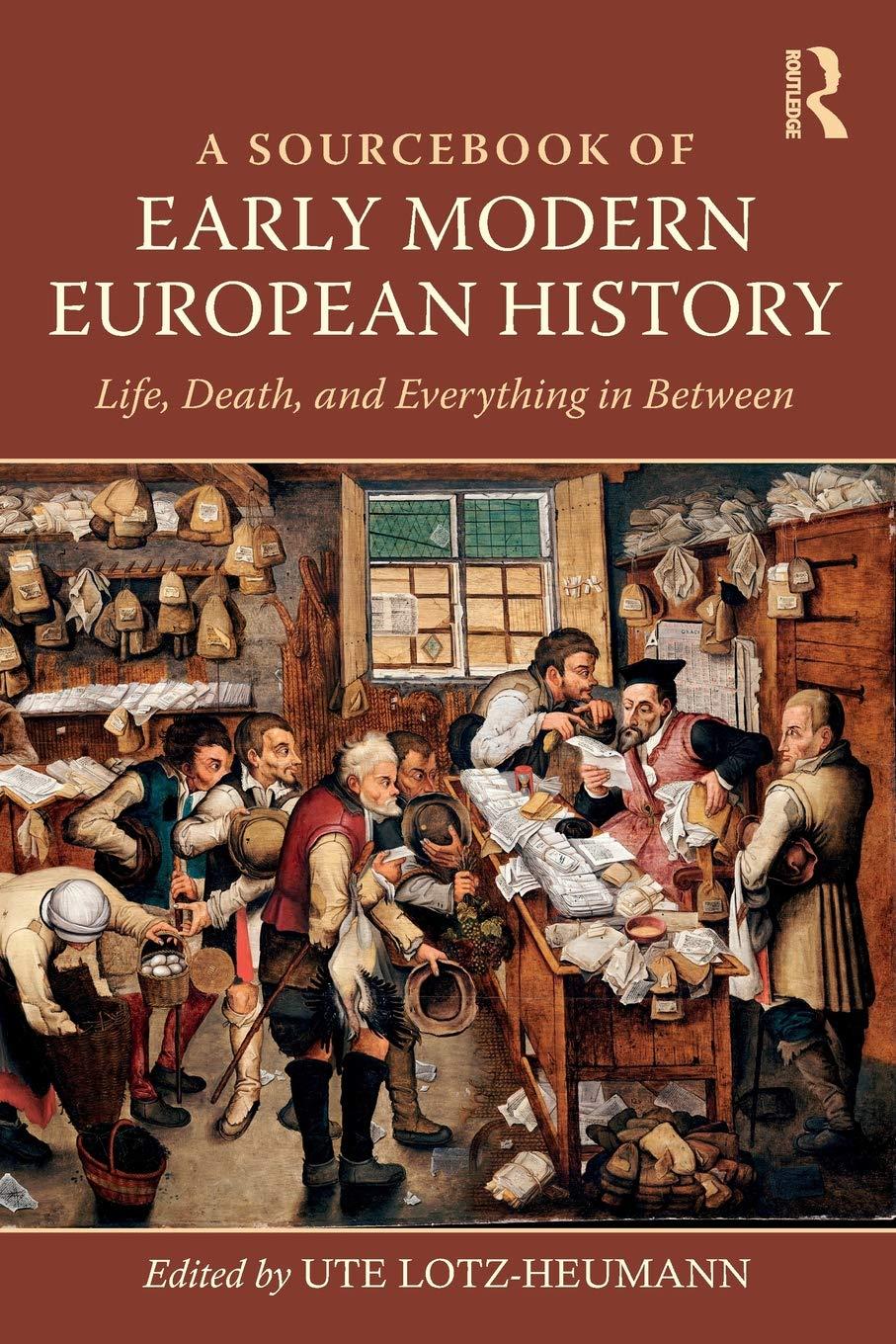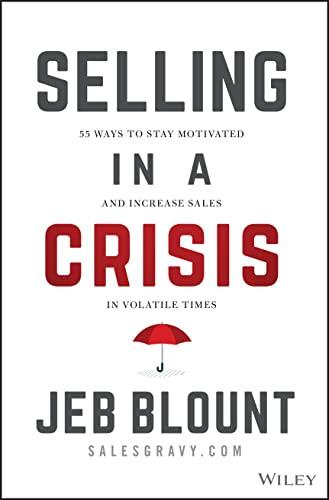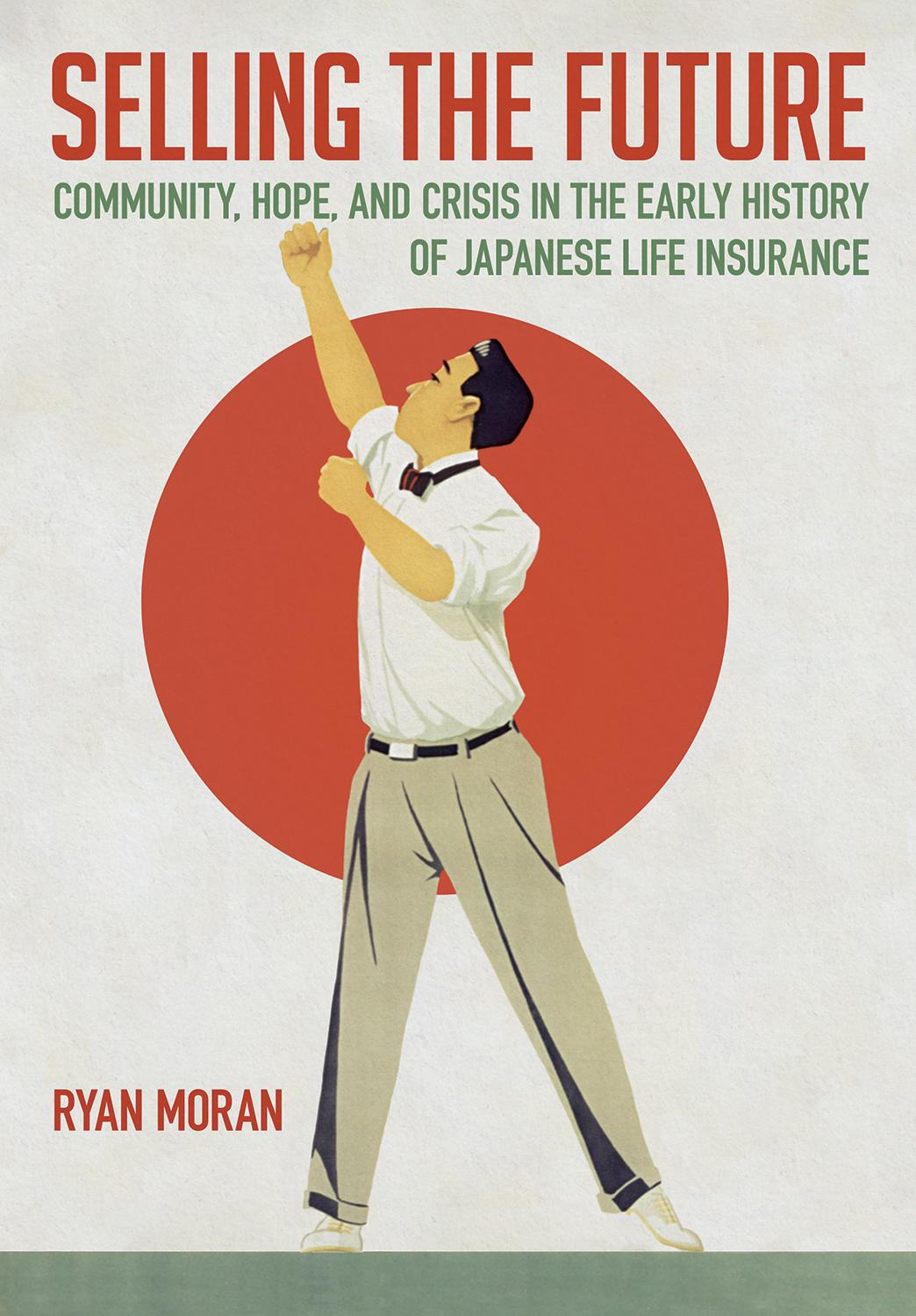SELLING THE FUTURE
Community, Hope, and Crisis in the
Early History of Japanese Life Insurance
Ryan Moran
CORNELL UNIVERSITY PRESS ITHACA AND LONDON
To Maile and Lilinoe
Contents
Acknowledgments
Note to Readers
Introduction
1. Making Mutuality Pro�table
2. Creating a Desire for Life
3. Delivering Security
4. Perfecting the Social Body
5. Empire of Responsibility
6. Life at War
Epilogue
Notes Bibliography Index
Acknowledgments
I thank Tak Fujitani and Stefan Tanaka at the University of California, San Diego, who have been phenomenal mentors. ey have always pushed me to re�ect on things in a more complicated fashion, and I am extremely grateful for all that I have learned from them. I also thank Cathy Gere, Joe Hankins, and Roddey Reid at UC San Diego.
Suzuki Akihito was a generous and welcoming host and mentor during my postdoctoral fellowship at Keio University, in Minato, Tokyo. I thank him for his guidance, for introducing me to people working on the history of medicine in Tokyo, and also for welcoming me into his seminar. Iwamoto Chiemi also helped to make my stay at Keio as pleasant as possible. I would like to thank Yazawa Masashi for hosting me as a visiting researcher at Waseda University and Umemori Naoyuki for helping to arrange this.
Over the years, I have been very fortunate to have received helpful comments, suggestions, and encouragement from many people. anks are due to far too many people to list here, though I would like to mention Ademide Adelusi-Adeluyi, Megan Asaka, Noriko Aso, George Aumoithe, Crystal Baik, Max Balhorn, Jody Benjamin, David Biggs, Karey Caracas, Meghna Chaudhuri, Alan Christy, Michael Cronin, Mark Driscoll, Kjell Ericson, Steve Ericson, David Fedman, Yulia Frumer, Gotō Motoyuki, Hashimoto Takehiko, Todd Henry, Katsuya Hirano, Reto Hoffman, Caley Horan, Miyako Inoue, Tadashi Ishikawa, Ji Hee Jung, Sohaib Khan, Dongwon Kim, Su Yun Kim, Shigehisa Kuriyama, Mariam Lam, Tong Lam, Sujin Lee, Antoine Lentacker, Angela Leung, Michael Shiyung Liu, Shi Lin Loh, Matsuzaki Yuko, Kate McDonald, Sarah Mellors, Mihara Sayaka, Barbara Molony, the late Aaron Moore, Murata Keiko, Nakamura Eri, Ti Ngo, Lisa Onaga, Ōshima Noriko, Jin-kyung Park, Dylan Rodriguez, Tomoyuki Sasaki, Dagmar Schaefer, Chelsea Szendi Schieder, Victor Seow, Grace Shen, Setsu Shigematsu, Denise Ferreira da Silva, Dana Simmons, George Solt,
Robert Stolz, Chikako Takeshita, Robert omas Tierney, Max Ward, Samuel Yamashita, Tim Yang, Lisa Yoneyama, Evan Young, Fariba Zarinebaf, and Ran Zwigenberg. Sookyeong Hong introduced me to the digital archive of the National Library of Korea, for which I am hugely grateful. Special thanks to Kim Keonhyung for pointing out the reference to life insurance in the Yi Tae Jun’s stories. And I apologize sincerely to anyone whom I’ve forgotten but whose help has been enormously helpful in my work.
I have bene�ted greatly from the assistance of numerous librarians as I’ve worked on this book. I thank the librarians at Keiō University, e Economics Library at the University of Tokyo, the Meiji shinbun zasshi bunkō at the University of Tokyo, the Yūsei hakubutsukan, the Waseda Library, the National Diet Library, the National Archives of Japan, and the Life Insurance Association of Japan for their help in accessing materials that have been crucial to this project. Kikuchi Makiko supplied me with the stunning images from the Yūsei hakubutsukan and aided me in obtaining permission for their use. e online collection of the National Library of Korea enabled me to locate crucial journals from the colonial period. Hiroko Hashitani and the ILL staff at the University of Utah library helped me to track down sources as I �nished the manuscript. I particularly thank Max Ward for kindly scanning an article for me and sending it from Japan as I was in the �nal stages of revisions. I also acknowledge Matsuzaki Yuko at the Shibusawa Eiichi Memorial Foundation for trying to help me gain access to the corporate archives of Japanese life insurance companies.
I feel immense gratitude to those who assisted me in my work at the University of Utah. I thank Dianne Harris, who was dean when I was hired. I would also like to express my thanks to my chairs Eric Hinderaker, Ben Cohen, and Paul Reeve. Ben and Dean Stuart Culver generously arranged for me to have leave when my daughter was born. anks also to all of my wonderful and supportive colleagues in the Department of History, especially Julie Ault, Matt Basso, Hugh Cagle, Beth Clement, Ed Davies, Nadja Durbach, Becky Horn, Danielle Olden, Susie Porter, Greg Smoak, Wes Sasaki-Uemura, and Janet eiss. I have also greatly appreciated the support of colleagues in other departments, especially Lezlie Frye, Mujeeb Khan, Kim Korinek, Ashton Lazarus, David Roh, Bunny Torrey, Kathryn Bond Stockton, Cindi Textor, and Myra Washington. I would also like to
thank students in my graduate and undergraduate seminars who helped me think through some of the ideas in this book.
anks to the Catteni Positivo cycling club for welcoming me into their ranks and introducing me to cycling in the greater Tokyo area. anks especially to Nagai-san, M-Taichō, Pari-san, Sansone-san, Arabesque-san, Daidai-san, Chō6-san, and Jonny-san.
Tak Fujitani, Stefan Tanaka, Lisa Onaga, Kate McDonald, Wes SasakiUemura, and Maile Arvin all read parts of the manuscript and gave very helpful suggestions. anks also to the participants of the Works in Progress workshop at the University of Utah for helping me to re�ne the �rst chapter. Two anonymous readers for Cornell University Press provided helpful feedback that greatly improved the manuscript. All remaining errors, of course, are my responsibility.
I am grateful to everyone at Cornell University Press for helping to make this book exist. ank you to Emily Andrew for �rst expressing interest in this book. Sarah Grossman, Jackie Teoh, and the rest of the production staff of Cornell University Press and Westchester Publishing have been a joy to work with and helped to shepherd it through the production process. Justin Sorenson at the J. Willard Marriott Library at the University of Utah kindly created the map for me.
I have bene�ted immensely from the hard work of many teachers over the years. I’d like to thank my professors at Reed College, especially Douglas Fix, for �rst introducing me to the pleasures of critical inquiry. Additionally, I was very fortunate to spend a year at the Inter-University Center at Yokohama and want to express gratitude to all of my teachers there. Satōsensei, Ōhashi-sensei, and Konnō-sensei deserve special thanks for helping to improve my Japanese.
I �rst lived in Japan in a small town that at the time was called Shiomachi (now merged with another town to form Hōdatsushimizu-chō) while working as an English teacher on the JET Program (Japan Exchange and Teaching Program). I would like to thank the many teachers, colleagues, and friends who welcomed me to life in that town, especially Araki-san, Moritasan, Tsubame-san, Tanaka-san, Maeda-san, Konishi-sensei, Kamatanisensei, and Fuji-san.
I’ve been immensely fortunate to have received generous support for this book. Various stages of research and writing have been sponsored by the
American Council of Learned Societies, Fulbright IIE, the Japan Society for the Promotion of Science, the Social Science Research Council, the D. Kim Foundation for the History of Science and Technology in East Asia, the UC Paci�c Rim Research Program, the UC San Diego Department of History, UC Riverside’s Department of Ethnic Studies, and the Department of History at the University of Utah.
I received incredibly helpful comments and suggestions at conferences, workshops, and talks at a number of conferences and symposia, including the Annual Conference of the Association of Asian Studies, the Annual Meeting of the American Historical Association, the Symposium on the History of East Asian Science and Technology, the World History Association Annual Conference, the Modern Japan History Workshop (formerly held at Waseda University), the Asian Society for the Social History of Medicine, Keio University, Kyoto University, UC Berkeley, UC Riverside, Oxford Brookes University, the V. V. Giri National Labour Institute, UCLA, and the University of Utah
An earlier version of chapter 3 was published as “Delivering Security in Modern Japan: Postal Life Insurance and Social Unrest” in positions: asia cultures critique 26, no. 4 (2019), used by permission by Duke University Press. An earlier version of chapter 4 was published as “Securing the Health of the Nation: Life Insurance, Labor, and Health Improvement in Interwar Japan” in Japan Forum 31, no. 2 (2019), 211–234, copyright by British Association for Japanese Studies, https:doi.org/10.1080/09555803.2018 .1461677. I thank the anonymous reviewers whose comments greatly improved those articles.
My family has always supported me, and I would particularly like to thank my parents Marshall and Charlene and brother Paul, in addition to the extended Moran family. anks also to the Awo-ohana for kindly welcoming me over the years. My greatest thanks go to my partner, Maile Arvin, whose love and companionship have helped sustain me enormously. ank you, Maile, for building a life with me. Finally, I’m grateful to our daughter, Lilinoe, for making every day of my life more fun. Only aer your birth did I �nally “get” why life insurance, with its vision of a fantastical future, could be so appealing.
Note to Readers
Japanese and Korean names are written with the surname �rst. When a cited author has published in English, I use the name order under which she or he published. Macrons (as in “Sōseki”) are used to indicate long vowels, except for words commonly written in English, such as Tokyo. e translations are mine, except where indicated.
INTRODUCTION
In one of the many humorous passages from Natsume Sōseki’s classic, I Am a Cat, the wife of Professor Sneeze (Kushami Sensei) expresses annoyance with her husband to her niece.1 As an example of her husband’s obstinacy, the professor’s wife recounts his discussion with a traveling life insurance salesman. While Mrs. Sneeze wanted the professor to purchase an insurance contract, Professor Sneeze stubbornly responded that “nobody needs to get insured unless he’s going to die.”2 When the salesman points out the preposterousness of this statement, Professor Sneeze digs in his heels and replies even more resolutely, “I’ve decided not to die, so have no worry on my account.”3 Mrs. Sneeze and her niece both declare that this is absurd. As Mrs. Sneeze continues, “But your uncle cannot see it. He swears he’ll never die. ‘I’ve made a vow, ’ he told the salesman with all the pride of a nincompoop, ‘ never, never to die.’ ” eir niece mockingly responds by succinctly stating, “How very odd.”4
Professor Sneeze’s decision not to purchase insurance is incredibly vexing to his wife, who wants the security of a life insurance contract. In an inversion of tales told by insurance salesmen, wherein the logical male salesman needs to overcome the objections of overly sentimental, superstitious, and backward women, Professor Sneeze’s wife and niece later trick him into declaring that he will purchase insurance. Aer Professor Sneeze has expounded on his dislike of female college students, his niece cleverly asks which he dislikes more, insurance or college girls. As a result of the niece’s artful manipulation, Professor Sneeze now advocates for the necessity of insurance. When his niece replies that insurance premiums are a waste of money, the professor retorts without any hint of self-awareness: “You only say such irresponsible things because you imagine you ’ re going to
go on living until you ’ re a hundred years old. Even two hundred. But when you ’ ve grown a little more mature, you’ll come to realize the necessity of insurance.”5
Sōseki wrote this story in 1905, as Japan emerged victorious in the RussoJapanese War. During this period, the life insurance industry expanded from a product largely geared toward the elite to one that would attract the members of the emerging white-collar professional class who read Sōseki’s work. A few years prior, in 1898, the Meiji state had established the Civil Code, which enshrined the patriarchal family of the samurai as the ideal for the nation. In this process, the male household head, who controlled the family and its property, became the locus of imperial citizenship. His wife, treated essentially as a minor, needed his permission to receive property, to sign a contract, or to buy and sell goods.6 Sōseki’s anecdote humorously upends this relationship, as Professor Sneeze’s wife is the responsible party who worries about familial continuity. Oen represented as �ighty, spendthri, and vain, Professor Sneeze is irrational and makes decisions based on his immediate mood rather than from a long-term plan.
Sōseki famously cast a critical eye on the rapid social changes that accompanied the Meiji Restoration. Michael Bourdaghs argues that in I Am a Cat and other works, Sōseki explored a vision of literature “not bound by the rational, a priori laws of the social totality.”7 In contrast, Sōseki attempted to use literature to imagine forms of communal life outside those idealized by the emerging science of sociology and its celebration of individual property rights.8 In I Am a Cat, for example, making the cat the narrator challenges the conventional notion of human dominion over the natural world that was essential to the forms of private property that emerge within capitalism.9 According to Bourdaghs, “In the cat’s eyes, it is the humans who are barbaric and cats who truly understand the morality embodied in a civilized property system … Human property is the, the cat implies, an irrational abomination maintained only through brute violence.”10 For Sōseki, literature itself offered the possibility of a dialogic relationship that transcended individual property rights. In Sōseki’s ideal, stories were reworked and gained meaning by the community of readers rather than solely as a result of the actions of a singular author.11
I Am a Cat is fairly agnostic about the value of insurance and seems mainly to use insurance to poke fun at Professor Sneeze’s assertion that he
will never die. Given Bourdaghs’ reading, however, it makes sense that insurance would have been a topic on Sōseki’s mind. In contrast to the more radical social formation Sōseki envisioned sprouting from literature, private life insurance companies represented their product as an aggregate social body of male customers who gained entry to this community through their policy premiums. Life insurance thus symbolized the triumph of the market in the management of human relationships as well as the commercialization of the concept of community. While insurance companies oen invoked the language of mutuality, they did so in the pursuit of private pro�t rather than to generate a liberatory vision of society. Selling the Future explores how private insurance companies and the state insurance system deployed insurance’s association with mutuality and community to commodify and govern both life and labor in modern Japan.
e �rst successful Japanese life insurance company began in 1881, a surprisingly momentous year that witnessed the introduction of de�ationary economic policies that stabilized the economy at the expense of the peasantry and eventually caused large-scale riots in central Japan. In the same year, the Meiji government announced the eventual opening of Parliament and the creation of a Constitution to quell support for liberal reformers in the Freedom and Popular Rights Movement. Prior to this, Saigō Takamori famously led a rebellion against the Meiji polity in 1877 to protest the loss of samurai privilege and to oppose the centralized authority of the new Meiji state.12 e late 1870s and early 1880s also marked a new phase of the Freedom and Popular Rights movement. is movement transformed from one largely comprised of elite intellectual support for the creation of Parliament and the expansion of popular participation in government to one in which lower class activists directly challenged the status quo in oen violent incidents.13 As Irokawa Daikichi illustrated, the circulation of new political and social theories emboldened local activists to form study societies and to dra constitutions, demonstrating that Japanese villagers were also starting to demand a say in their own governance.14 e 1870s would also witness the movement for bunmeikaika, oen translated as Civilization and Enlightenment, which trumpeted the value of Western science and knowledge for building up Japan as a strong nation-state with an industrialized economy.15
Insurance thus emerged as the state and Japanese elites demonstrated a commitment to science and technology amid new challenges to the dominant political and social order. Life insurance proved enticing, I argue, because it seemed to offer consumers a means of controlling their life-course amid an era �lled with rapid change and instability. Insurance salesmen suggested that a customer who purchased an insurance contract could almost ensure a hopeful and prosperous future for his family. According to companies, insurance differed from other �nancial products of the early Meiji period due to its basis in statistics and probability. is allowed them to chart a stable future for the aggregate. By contrast, private �rms and the state life insurance system argued that the individual lived a life �lled with contingency and precarity. In company materials, death oen literally seems to lurk around every corner. According to �rms, the individual consumer was powerless to alter his life-course through his own actions, but could protect his family’s future by joining the aggregate community of the insured.16 In order to enjoy this security, however, the individual consumer needed to internalize norms of appropriate conduct, which included savings, responsibility, and even hygiene. While life insurance promised customers prosperity and security, it required them to delay grati�cation until an indeterminate point in the future. As it brought bodies into a disciplinary regime, life insurance also extracted economic resources from customers. It thus became an important source of �nance for colonial expansion, wartime �nance, and social welfare projects. Life insurance thereby functioned as an important modernist technology that helped to instantiate expectations for responsibility and recon�gured meanings of mutuality as tools for governing and commodifying life in both Japan and its colonies.
Insurance has been a signi�cant, if not fully appreciated, mode of de�ning and transforming social relations in modern societies. While historians have recently brought greater attention to the importance of insurance, most have focused on the United States or Europe.17 According to Caley Horan, life insurance in the post–World War II United States constituted the quintessential form of neoliberal governmentality.18 As she argues, insurance companies sold the fantasy that responsible individuals could fully take control of their families’ futures. As she writes, “industry leaders encouraged Americans to view participation in public insurance programs as a form of dependency.” e US insurance industry instead
persuaded consumers to take charge of their own security by purchasing a private life insurance contract and discouraged them from conceiving of security as something that could be attained through collective action.19 Jennifer Klein has also masterfully demonstrated how private insurance companies helped to forestall larger claims to social welfare in the prewar and postwar United States. As she shows, insurers regained market share and consumer trust aer the calamitous �ndings of the 1905 Armstrong Commission by selling group policies to employers. is led to a situation wherein most Americans came to receive security as a bene�t from their places of employment rather than as a result of the social obligation of the state to its citizens.20 Private insurers managed to prosper, even with the environment provided by the New Deal, by offering supplementary policies and �ghting against the expansion of bene�ts provided by public social welfare programs.21 Klein analyzes this situation as an example of “welfare capitalism,” in which companies came to supply bene�ts to workers in order to maintain productivity and to sustain the industrial order.22 As Klein and Horan demonstrate, private US insurance companies proved essential to creating the expectation that individual Americans needed to obtain security through their own efforts and not from social programs run by the government.
In Japan, life insurance would also help to establish expectations around security as well as to de�ne normative social behavior. While private insurance companies came to dominate the US insurance market, however, Japan would see the development of a state-run industrial life insurance system under the authority of the post office in addition to a private insurance system. rough its investment fund, the postal life insurance system distributed funds at low interest rates to groups that promoted social welfare. While private insurance companies in the United States worked to prevent the spread of government welfare bene�ts, postal life insurance would be one vehicle through which the Japanese government distributed resources to groups engaged in promoting the public good.
Nevertheless, the expansion of the postal life insurance system would also work to forestall more expansive claims to social welfare in Japan. Rather than redistribute wealth to the poor, postal life insurance relied on pro�ts generated from its largely poor customers to function. As supporters of the system stressed repeatedly, the Japanese postal life insurance system differed
from social welfare. For example, postal life insurance disbursed money to social welfare organizations as loans; while the interest rate was low, it expected to generate pro�t. In contrast to compulsory European social insurance systems, moreover, postal life insurance was voluntary. is meant that the individual customer needed to freely choose to join the community of the insured. e security and social protections obtained through life insurance were not rights of imperial citizens, but rather goods that they would need to purchase.
Further, while Japanese private and public insurance companies employed the language of the responsible individual in ways that sometimes mirrored the US industry, they always paired this with a vision of a new social collective mediated through life insurance. At the industry’s inception in Japan, private �rms sold insurance as a type of collective social body through which the elite male customers who dominated the industry’s early years would engage in mutual support. When the industry expanded to include laborers and the poor with the post office ’ s state-run system, scholars and government officials claimed that the social nature of insurance would reintegrate alienated workers back into the community of the nation. Post office officials in colonial Korea similarly argued that postal life insurance would bring disaffected Koreans back into the community of empire. e state and private companies thus sold security in the aggregate as a means for citizens to take shelter from the precarity that seemed to haunt modern life. By merging individual consumption with group security, insurance executives and government officials alike transformed life in its form as an aggregate social body into both a subject of governance and an object of desire. As it became an established product necessary for participation in responsible society, life insurance would also introduce important public health campaigns that impacted the relationship between subjects and the state. Community, in its form as a fetishized commodity, supplemented the capitalist ideology of the isolated consumer or worker responsible for supporting himself and his family.
e community formulated by insurance companies is thus a central concept of this book. e community of insurance customers, of course, was not the organic gemeinscha community based on personal affective ties to which interwar thinkers such as Orikuchi Shinobu or Yanagita Kunio sought a “return” in their valorization of folk customs.23 In contrast, life insurance
companies established their communities through consumption. While Miriam Silverberg has presented consumption as a form of individual agency for subjects in imperial Japan, this book looks at how insurance companies aggregated lives through the commodity, which had the effect of reifying capitalist social relations.24 Although insurance companies uniformly stressed the mutuality of insurance, the community idealized in insurance discourse did not always mean the same thing. It could signify both nation and the laboring classes in discussions of the state-run system in interwar as well as wartime Japan. It might also refer to the imperial community idealized by empire when applied to colonial Korea. Community also signi�ed elite men engaged in mutual aid in the industry’s early years. While the speci�c meaning of the community of insured could thus differ, companies and the state always presented insurance as a means of re-creating social bodies engaged in the intimate work of supporting each other.
As was true in other parts of the world, unevenness and con�ict pervaded Japan’s experience with modernity.25 Scholars have analyzed various strategies that the state and intellectuals employed to make sense of a rapidly changing world. Historians, for example, have pointed to the reinvention of the past to forge a shared conceptual space that could bridge the social and political instabilities that emerged during the early Meiji years.26 Selling the Future also points to the signi�cance of moments of disruption, and looks at how the state and private companies rebuilt social relations through the establishment of communities of insurance customers. Life insurance �t this moment of drastic change well, as its adherents argued that its ability to scienti�cally chart out the future for the aggregate of the population allowed it to bring security to customers and their families in the present. Rather than emphasizing a return to an idealized past, moreover, insurance demonstrates how a vision of the future could also work to reestablish social relations in modern Japan.27 Insurance companies argued that customer mortality data allowed them to determine the probable lifecourse of a population, which enabled them to establish a secure and prosperous future for their customers. Marking the contours of the social body, in other words, would allow for interventions to assuage social disruption. Private companies and the state contrasted their projection of a predictable future with the numerous difficulties customers faced in their
everyday lives to make a life insurance contract seem attractive. e insurance industry offered customers access to a secure future, as long as they could learn to delay grati�cation and engage in disciplined payments of insurance premiums.
A focus on the management of data, however, made situations that were in fact social and historical seem natural. As Dana Simmons writes regarding nineteenth century France, scientists attempted to determine a “vital minimum,” or the minimum needed to maintain life. Scienti�c investigation thus allowed elite male scientists and scholars to reconstitute social hierarchies as a “natural” part of society. Various segments of society could then be properly balanced in a way analogous to a chemical equation, while the elite simultaneously received more because of their “natural” superiority.28 ese technocrats held the belief that science would provide the solutions to the problems of social dislocation that accompanied industrialization, thus occluding the con�ict over the distribution of resources inherent in modern societies.29
Of course, the anxiety that consumers felt never truly abated. Kathleen Woodward argues that the widespread dissemination of data into everyday life produces an affective state she calls “statistical panic,” whereby the statistically probable comes to seem like one ’ s own personal (and oen grim) destiny. However, owing to the nature of uncertainty, where risk is associated with probability, subjects can never fully be certain that they will (or will not) succumb to this destiny. e uncertainty built into understandings of probability increases one ’ s feeling of anxiety.30 Statistics, in Woodward’s words, are “radiating risk.”31 Japanese insurance companies preyed on their customers’ uncertainty, selling insurance as a panacea that would relieve consumers of anxiety. While everyone will die at some point, uncertainty comes from not knowing when or how one will die. Without knowing this data point, companies asserted that consumers could not feel con�dent that they had done enough to provide for their descendants in the event of an untimely death. In the sales discourse, only entry into the community of the insured could provide peace from anxiety. is respite was merely temporary, however, as customers took on new risks as they advanced in life. According to insurance companies, the sole solution was the repeated purchase of an insurance contract.
Along with aggregating lives in community, life insurance companies helped to promote an idealized vision of Japanese people as responsible consumer-subjects. e endowment contract, which combined a life insurance policy with an annuity, became the most popular type of policy in prewar Japan, and it strengthened the connection between insurance and savings. From the late 1870s onward, industry publications asserted that Japanese people did not understand the value of responsibility and savings, which they connected to modern citizenship. Employers criticized workers for being spendthri with wages.32 Private company executives and state bureaucrats alike argued that life insurance would teach the consumer �scal discipline, by making the regular payment of a premium a part of his everyday life. Executives of private companies, state bureaucrats, and insurance scholars all argued that life insurance would transform Japanese and colonized Koreans into responsible modern subjects with �scal discipline and regular employment. Life insurance, in other words, promised to infuse habits needed to survive in modern societies into the everyday lives of both Japanese and colonized subjects.
e concept of responsibility has been essential for quelling the social disruptions produced by modern capitalism. As Miyako Inoue has written, discourses of responsibility place an obligation on the individual to regulate his or her conduct and ignore larger structural factors such as class that might cause the subject to fall short of an ideal. Any subsequent failure then becomes a result of the choices made by an individual.33 Insurance both required and helped produce the responsible citizen in modern Japan, while it also offered him the shelter of security in the community of the insured. According to �rms, a responsible patriarch protected his family and pooled his individual risk among a larger aggregate population. e claim to be able to calculate future probability and provide security also meant that any customer who refused a life insurance contract was neglecting his obligations to family as well as nation and was therefore acting irresponsibly. As a member of the community of insurance customers, the policy holder was also shielded from excessive risk, which might allow him the emotional space in which to develop his entrepreneurial talents and help build up the Japanese economy. Being responsible thus could also paradoxically promote certain kinds of risk taking. As idealized by company executives and state bureaucrats, insurance would thus produce a responsible citizenry that
maintained social order, protected familial continuity, and contributed to the project of nation building.
e ideal of the responsible middle class and imperial subject re�ected transformations in conceptions of the family that accelerated in the 1890s. Newspapers and popular magazines depicted the Meiji Emperor and Empress as models of proper gender relations for the rest of the nation. While the Meiji Emperor himself was not monogamous, media representations of the imperial family helped to promote the stable and monogamous marriage as an important part of imperial citizenship. Public morality exhorted women to ful�ll their roles as “good wives and wise mothers” and for men to represent the family in public life.34 e discourse of the middle class that emerged around the turn of the century also highlighted the importance of children and family. It responded to the anxieties faced by Japanese people as the language of meritocracy replaced the old language of social status. Within this discourse, social hierarchies became reconceptualized as the result of education and the fashioning of the self along respectable bourgeois lines.35 Around the same time, scienti�c experts also sought to transform child development into an object of knowledge that required middle class mothers to purchase appropriate toys, magazines, and clothing.36 Aspirants to the category of middle class thus had to carefully monitor their domestic lives. While Mark Jones has noted that this discourse especially emphasized the role of the wife within the middle class family, insurance allows us a glimpse into the idealized role of the male breadwinner within the newly articulated responsible family.37 By purchasing life insurance, the male consumer could ful�ll his prescribed social role while ensuring familial security and continuity.
Although women did also purchase insurance contracts, prewar Japanese private companies generally assumed that Japanese men would primarily comprise the workers and customers who made up these social bodies. e Meiji Civil Code, as noted above, consigned control over the household and its property to the male household head. For an ambitious man, life insurance would also protect the envisioned upward trajectory of his family, ensuring its prosperity in the event that he died prematurely. Companies toward the end of the nineteenth century thus articulated themselves as spaces where elite male consumers could pool their individual risks and establish a body of mutual support. More women purchased life insurance
from the post office. is perhaps re�ected the fact that families used these lesser valued industrial policies to help cover expenses related to burials as well as for medical costs incurred toward the end of life.38 As it moved into the home itself, �rst with health guidance and later with rajio taisō (radio calisthenics), postal life insurance sought to remake the daily lives of the entire household. While continuing to center on the patriarchal family model, postal life insurance did not focus as explicitly on the household head himself, engaging instead with the entirety of the household.
Bringing Lives Together
While insurance had an interesting and lengthy prehistory in Britain, the modern industry utilized mortality calculations aer 1760 and only expanded beyond London aer 1800.39 In spite of its somewhat later start at the end of the nineteenth century, the Japanese industry quickly grew to become among the largest in the world. Its transformation especially accelerated around the period of the Russo-Japanese War, as the industry took advantage of wartime uncertainties experienced by an emerging middle class and subsequent postwar economic expansion. Between 1904 and 1908, the annual value of new contracts increased from 46 million yen to 134 million yen. For many Japanese people even today, purchasing a life insurance contract remains a symbol of responsible adulthood. Although the Japanese life insurance industry fell on hard times aer the economic crash of the early 1990s, it has rebounded in recent years and is still among the largest in the world. As of September 2020, the Japanese life insurance industry could claim 188 million individual life insurance contracts in force with a population just over 125 million.40 By comparison, the United States life insurance industry had approximately 130 million contracts in force out of a population of nearly 330 million. is re�ects the continued importance that Japanese people place on insurance as a source of security for descendants. Recent policies also include help with medical costs such as cancer surgery, while many Japanese people see life insurance as a source of support as life expectancy increases.
e importance of the life insurance industry has continued amid the crises that have afflicted Japan in the 21st century. e Tōhoku earthquake and the Triple Disaster of 2011 in�icted a catastrophic psychological blow to
the nation, caused the downfall of the ruling Democratic Party of Japan, and le lingering physical, economic, and social destruction in the Tōhoku region. For the Japanese life insurance industry, however, it ended up being a net bene�cial event. e amount that life insurance companies paid out related to the earthquake only amounted to 1.02 percent of claims paid during the year.41 Perhaps stimulated by the earthquake-related anxiety that permeated the nation, the industry experienced great success in 2012 as it gained some 15 million new contracts, up from 12.77 million two years earlier.42 e impact of COVID-19, the novel coronavirus that began to spread around the world in 2020, remains to be seen. One company, however, has seen this as an opportunity to launch a new type of health insurance speci�cally for customers hospitalized due to COVID-19.43 In the immediate short term, the pervasive economic and social uncertainty produced by COVID seems to have hurt the life insurance industry, as new business in September 2020 was only 64 percent what it was in the previous year, yet a desire for security in the aermath of COVID might prove to be bene�cial to the industry in subsequent years.44
In late-nineteenth century Japan, the industry developed, along with new ways of thinking and categorizing lives. According to the literary critic Suzuki Sadami, the kanji characters in the word for “life” (seimei) only became established from the 1880s. e kanji in that word had been used previously, but interchangeably with other characters. In the early Meiji period, seimei became the term used when translating Western works such as Samuel Smiles’s famous Self Help and the writings of Ralph Waldo Emerson. Seimei seemed to be a better means of translating “life” than other extant words, since it could encapsulate the Christian concept of equality under heaven, and also because supporters of individual rights used this word.45 While seimei was a term used by supporters of innate rights inherent to an individual, it would also be taken up by thinkers in�uenced by the evolutionary thought of Herbert Spencer. e term seimei could thus mean life both as a distinct possession of an individual and as an object connected to a larger aggregate collectivity, such as the life of the nation or society. Life insurance companies helped to popularize the characters in seimei and their current reading as the modern term for “life.”46
e literary theorist and cultural critic Karatani Kōjin noted that the 1890s saw the birth of what he called landscape.47 While he did not discuss
life insurance, the period that he analyzes corresponds to the industry’s expansion. Karatani argued that the subject of the naturalist novel emerged just as regular Japanese people came to be the object of literary investigation in a way that was reminiscent of how landscape could become the subject of �ne art.48 e inner self expressed by new styles of writing required an external, abstract, and general mass of humanity.49 Karatani’s argument overlaps with Suzuki’s; the literary subject capable of expressing his interior mental world emerged together with the literary emphasis on exploring the life of the bourgeoisie. Early naturalist writers, oen in�uenced by Christianity, also wanted to promote the spiritual freedom of both the individual and common people.50 us, we can note the emergence from the 1870s through the 1890s of new ways of conceiving of the relationship between a newly discovered “authentic” self and the larger collective of urban Japanese people. e fact that life insurance emerged in Japan consonant with the modern literary subject is not surprising, since life insurance similarly worked through both a mass aggregate and the singularity of the responsible bourgeois consumer.
e approach to life as an aggregate that could become a target of corporate or state intervention related to new efforts to mobilize society in the early and middle Meiji periods. In 1872, the Meiji state established the �rst national museum as part of the process of creating an enlightened public capable of participating in the buildup of a strong economy.51 Similarly, as Ian Miller notes, the zoological gardens established at Ueno in 1882 aimed to divide humans from nature and to establish a vision of the populace that was “curious, docile, productive, and ‘civilized.’ ”52 is transformation allowed human society and the natural world to be conceptualized as bodies that could be understood scienti�cally.53 Japanese political leaders thus sought to engage the people as a population subject to natural laws so that they would become knowable and productive subjects.
Along with these efforts to civilize and enlighten, the Meiji period witnessed an expansion of data-gathering efforts that had started in the last decades of the 1500s during the period of uni�cation. e new regimes enacted large-scale cadastral surveys and cartographic projects that they used to govern.54 Moreover, during the Tokugawa period (1600–1868), lists abounded of famous attractions, local delicacies, festivals, and even brothels in castle towns and along travel routes.55 During the Tokugawa period, there
was also a preponderance of village population registers. ese were produced according to local paradigms and sometimes omitted groups of people, such as samurai, as well as some deaths from their calculations.56 While there was thus a good amount of data on populations in the Tokugawa period, it was not always organized according to nationally useful categories. is perhaps re�ected the Tokugawa concern with measuring the productivity of the village one of the basic units of the Tokugawa polity which did not require a perfect accounting of the nation’s population.57
e transformation to nationally useful compendia of information did not happen immediately with the transition to Meiji in 1868. According to Kären Wigen, compilers of local statistical surveys beginning in the 1880s shied emphasis from locality to general topic, as this new organizing schema was necessary for coordinating a national economy. Nevertheless, these surveys continued to contain information about the local and the unique, re�ecting the salience of past organizing principles.58 Similarly, when the statistician Fujisawa Rikitarō created a national mortality table in 1888, the lack of uniform data categories in prefectural population surveys from the 1870s and 1880s made his work incredibly difficult.59 Many early life insurance �rms, in fact, used a mortality table from England, since they lacked an accurate picture of the mortality data for Japanese people.60 Nevertheless, the Meiji period would slowly witness a transformation away from local compendia to nationally standardized collections of population data.
While efforts at classi�cation and standardization thus required time to develop, new Meiji �gures from business and politics emphasized the importance of quantitatively understanding the population and resources of the nation-state from the early years of the Meiji period. e Dajōkan (Council of State) created the Section on Statistics (Seihyōka) within the Central Chamber (Sei’in) in 1871. Although the bureaucratic location of the Section on Statistics (later renamed the Office of Statistics) would change over the next several years, it initially sought to collate local survey practices so officials could better understand changes in the national population, births, deaths, economic production, trade, �nance, and other categories essential to modern governance.61 rough the activities of the Statistics Bureau, as well as other information-gathering organs in the state
bureaucracy, the government tried to create a comprehensive numerical picture of the people under its authority.62
Objective and rational knowledge would constitute one of the central elements in the structuring of authority in post-restoration Japan. e leaders who challenged the preceding Tokugawa order could not draw on the past neo-Confucian ruling ideology that valorized the natural division between rulers and the ruled. e Meiji state eliminated status distinctions, as all people became equal subjects of the Emperor. is, however, created a problem, as the Meiji leadership needed to explain their own hegemony. As the ruling structure solidi�ed in the 1870s, Meiji leaders increasingly justi�ed their authority by claiming that they were rationally and objectively managing the competing interests of society. is structure of authority paradoxically maintained power by a limited group, whose members claimed to rule according to impartial and rational principles that transcended the subjective judgment of any one clique. e scienti�c management of society thus proved essential to both explaining and rationalizing the structure of governance in early Meiji Japan.63
Sugi Kōji, who headed the Office of Statistics, was one of the key supporters of the development of statistics in Meiji Japan. e son of the head doctor of the former Ōmura-han, a domain in the Hizennokuni area near present-day Nagasaki, Sugi was never directly connected to a life insurance �rm and is perhaps best known for his work in developing the national census that took place in 1920. Nevertheless, he helped to establish the new intellectual environment that encouraged the spread of statistical knowledge, which was essential to the formation and proliferation of Japan’s life insurance industry. Like many early-Meiji intellectuals, Sugi had received his initial training in Western science and medicine through the study of Dutch Learning at the end of the Tokugawa period. He �rst studied in Osaka and later continued in Edo (present-day Tokyo). Aer this, Sugi worked as a teacher and translator at the Tokugawa Bakufu’s Kaiseijo (School of Western Studies), where he serendipitously had his �rst encounter with statistical knowledge in 1864.64 Aer his unexpected introduction to the concept of statistics, Sugi borrowed texts from Nishi Amane and Tsuda Masamichi, who had returned from studying statistics with Simon Vissering at Leiden in the Netherlands. Vissering had been
in�uenced by the thought of the French statistician Adolphe Quetelet, who sought to use statistics to uncover the rules of a society.65
Although Sugi’s studies of statistics spanned the divide between the Tokugawa and Meiji periods, the impact of his knowledge was strongest aer the Meiji Restoration. In the new urban space of Tokyo, Sugi founded study societies and also encouraged younger scholars to pursue the study of statistics. As Sugi would later recall, his initial interaction with Western statistical data at the end of the Tokugawa period was quite shocking. He writes:
Among the dozens of materials that arrived by ship from Holland every year, there was a document on the statistics (sutachisuchikku) of Holland from 1861 and 1862. I suddenly looked at one that had writing on it about people. Out of one hundred people, men were a certain percentage; newborn children were a certain percentage; these sorts of things were written. Since I did not know what it meant to calculate people into percentages, I could not understand this and no matter what I tried, people having percentages seemed strange and I became confused … As I looked at it … I realized that these were types and I thought that this was a very interesting way to see the world … e births, deaths, marriages, divorces, people who had come, people who had le, �res and even the number of people who had committed fraud and other crimes were lined up in comparable rows. When I saw this, I remembered my earlier thoughts and understood the necessity of these valuable statistics.66
In Sugi’s recollection, statistical charts and graphs allowed him to uncover the normal contours of a speci�c population. is constituted a new way of categorizing, and thus seeing the population of the nation as an abstraction that could be brought under centralized control.
Social surveys and statistical data also played important roles in discourses of health and hygiene in the early Meiji period. In the 1870s, the Central Hygiene Bureau started to collect health data from all over the nation, paying special attention to levels of venereal disease among prostitutes. e Hygiene Bureau’s �rst director, Nagayo Sensai, had studied hygiene measures in Europe and was especially in�uenced by Prussian
attempts to systematize the management of health and hygiene on a national level. In order to assemble and tabulate this data, the Hygiene Bureau created the Office of Statistics to collect the health data of the people as members of the organic body of the nation.67 As Sabine Fruhstuck writes, “it was a state campaign aimed at society in the mass. It reached into the realm of public works, which were the responsibility of the state … and it operated through the state administration to eliminate threats to life and to improve the nation’s well-being.”68 us, statistical data intricately tied the process of making social life visible to attempts to control the health and hygiene of the emerging polity.69 e development of a state infrastructure capable of creating, gathering, and then classifying the myriad data from throughout the nation proved essential to the governance of the political space of Japan. Statistics, in fact, extended to the political thinking of Fukuzawa Yukichi, one of the most important intellectuals of Meiji Japan. While Fukuzawa is always mentioned in any discussion of the importation of Western ideas, scholars have paid less attention to the importance of statistics to his thought. As Ōkubo Takeharu argues, Fukuzawa’s famed advocacy of the concept of civilization owed much to statistical knowledge. In�uenced by Henry Buckle, Fukuzawa wanted to insert Japan into a universal history, and he argued that statistical analysis would allow for the demonstration of general principles of world history.70 Improving Japan’s lot in the society of nations meant improving the aggregate rather than focusing on individuals.71 Fukuzawa’s conceptualization of Japan’s place in the world of nations thus re�ected the social assemblages created by statistical thinking. Quantitative data proved essential to organizing, conceptualizing, and governing Japan as a modern nation-state.
Life of the Community
While stereotypical views of Japan have long stressed an ahistorical understanding of Japanese people’s commitment to social ties at the expense of individual ethical development, this study looks at how insurance companies established the community of the insured as a speci�c historical assemblage.72 In the industry’s inception in Japan, advocates presented life insurance as a modern and scienti�c social body in which customers engaged in the intimate work of supporting each other in times of crisis.
Insurance companies would continue to invoke the trope of mutuality throughout the prewar and wartime periods. In the aermath of the AsiaPaci�c War, this connection deepened as most companies transformed themselves from stock companies into mutual insurance companies. Although women also purchased life insurance contracts, prewar insurance companies generally envisioned their customers as male breadwinners, and men made up most of their customers. e community of the insured also thus became a space largely de�ned by male consumption and expectations for the responsibility of the male household head.
e gender studies theorist Miranda Joseph compellingly argues for the importance of community as a necessary supplement of capitalism. As Marx wrote, labor is produced socially under capitalism, although the worker appears to be an isolated individual “freely” selling their labor.73 While Joseph acknowledges that post-structuralist and feminist critics have noted the limiting and disciplinary elements of community, she asserts that many on the le have nevertheless tried to recuperate community as a political strategy for resisting the worst effects of capitalism. Instead of trying to articulate an idealized vision of what community should be, Joseph argues that we need to shi our attention to ways in which community is both produced and consumed within capitalism.74 Rather than seeing community and capital as binaries, Joseph pushes us to think of the relationship between the two concepts as supplementary.75 While capital disrupts older social forms, such as a village community, it also creates new ones, such as a shop �oor or labor union.76 Corporations regularly utilize the language of the company-as-family as both a marketing tool and a negotiating strategy, to induce workers to accept suboptimal labor contracts or labor arrangements that exclude people outside the designated community.77 In prewar Japan, for example, factory owners and government officials argued that Japanese “traditions” of loyalty and benevolence, together with paternalistic relations in workplaces, obviated the need for stricter protections for workers.78 In the period of high growth in postwar Japan, technocrats and management specialists argued that unions needed to focus on raising productivity and the living standards of the entire nation instead of emphasizing class con�ict.79 As another example, Japanese labor unions in the 1950s and ’60s promoted a vision of male breadwinner-led families that discounted women ’ s labor and contributions to the labor movement.80 Capitalism thus
produces a number of social formations, which might either challenge or reinforce the hegemony of capital. Community does not then mark an authentic space that lives on alongside capitalism, but rather denotes a social formation produced within capitalism that can oen reinstantiate capitalist social relations by soening its harshest aspects.81 Insurance established a community of consumers that reduced the precarity faced by individuals within capitalism without challenging ideas of right, responsibility or individuality that compose such an essential part of that socioeconomic system.82
As Joseph notes, the concept of community oen evokes an idealized precapitalist past. Joseph rightly critiques this romanticized vision of community as a social formation that exists outside of capitalism.83 In Japanese life insurance company materials, however, we see how discourses of community can play a similar suturing role even as they are explicitly modern and future-looking. In Japanese studies, Marilyn Ivy has written an important study of nostalgic and phantasmic visions of the past in the establishment of the Japanese national community.84 In contrast, life insurance points to the relationship between modernist and utopic visions of the future and the constitution of social groups. e idealized vision of insurance presents a world where customers come together in mutual assistance. Japanese life insurance companies claimed to combine the warmth associated with mutual aid with the objectivity of modern science. is communal form gestured to older village mutual aid organizations like the tanomoshiko or the kye in colonial Korea but never simply evoked nostalgic longing.85 It also asked consumers to think of their families as being on a trajectory toward a bountiful future. During the wartime period, insurance similarly became a vehicle through which the state encouraged its subjects to accept momentary sacri�ce in exchange for what it promised was the certainty of coming victory. Life insurance companies thus created a vision of community that was always modern and looking toward an optimistic future.86
rough the provocative concept of cruel optimism, the social theorist Lauren Berlant helps us to understand why the image of the social connectivity and future prosperity offered by insurance could prove enticing to insurance consumers. As Berlant argues, a belief in a better future can cause us to accept situations that actually cause injury.87 She notes that cruel
optimism is an “incitement to inhabit and to track the affective attachment to what we call ‘the good life,’ which is for many a bad life that wears out the subject.”88 Optimism can convince people that things will become better in the future, as long as they simply sacri�ce in the present. At the same time, there are no guarantees that the imagined future will actually be realized. In fact, many lack the means to create a different future, and cruel optimism traps them in a subjugated present, while the promised future will never actually arrive. is is the cruelty of optimism for people who lack the means to control the materiality of their lives within the reality of racialized capitalism.89
In this work, cruel optimism plays out most fully in the life insurance policies that the state instituted during the wartime period, but also helps to explain the post office ’ s life insurance system and the sales strategies of private �rms that evoked the future as a space of increasing prosperity for those able to properly monitor their conduct. Insurance executives employed a dialectic of hope and fear to entice customers to buy into the industry’s vision of a prosperous, stable future. In a linear temporal structure, the indeterminacy of an inchoate future preserves the possibility that things can become better than they are, and is part of why people become convinced to accept sacri�ce, hardship, or even boredom in their contemporary moments. e dyad of projected certainty with more affective registers of hope and fear helped make the wartime state’s vision of the future seem compelling. In the practice of life insurance, the idea of the future became a powerful force for stabilizing and managing individual conduct that worked through the desires of consuming individuals.
Structures of feeling do not simply emerge from nowhere. erefore, this book also tries to unpack the relationship between objects and the embodiment of new emotional or intellectual registers. In her powerful analysis of phenomenology, Sara Ahmed demonstrates how objects help to orient individuals along a life-course.90 As Bruno Latour noted, “to have a body is to learn to be affected, meaning ‘ effectuated,’ moved, put into motion by other entities, humans or nonhumans.”91 Life insurance could be a powerful force for instantiating a belief in communal security and future progress because of its usage of statistical data and their visual representation in mortality tables and curves. Company materials, sales guides, and insurance treatises always noted that statistical data comprised
some of the more signi�cant intellectual technologies of insurance. rough the application of mortality tables, life insurance �rms claimed to be able to chart the probable future for a population. In different contexts, �gures associated with the life insurance industry also claimed that this would enable them to successfully intervene in the future for the population. e insurance industry’s affective projection of a prosperous future thus took shape through its deployment of quantitative data and helped to position customers along a temporal axis.
In modern societies, numerical data help to give a comprehensible shape to a population. According to Mary Poovey, a new mode of seeing and organizing information, which she terms “the modern fact,” emerged in 17th century Britain. e modern fact was oen numerical although it did not have to be and re�ected a way of knowing in which data represented something in and of itself, while they could also be used to make a larger, more universal claim.92 As part of this process, the modern fact became something divorced from processes of human judgment and appeared to simply enumerate phenomena that existed in the world. At the same time, the modern fact only took on meaning when systematized and ordered through the intervention of humans.93 is simultaneous duality of the modern fact both objectively true in and of itself, while only acquiring signi�cance when placed in relation to other facts explains why it remains such a powerful and important part of contemporary modes of argumentation. e usage of statistics and social surveys thus did not simply reveal the a priori existence of social groups such as the poor, the old, the criminal, and so forth, but was actually part of the very constitution of these categories. Because numbers sometime seem to exist apart from human intervention, however, they can act to give these categories the appearance of an ontological reality that they do not actually possess. When Japanese life insurance companies claimed that statistical data allowed them to chart the probable future, they similarly utilized the presumed ontological reality of the modern fact. As this book demonstrates, however, life insurance �rms as well as the state acted on the social assemblages created by mortality data in different ways at different historical moments.
Bringing attention to the ways in which objects can affectively orient lives also reminds us of the intellectual work that is required to reproduce heteronormative gender relations. As Judith Butler argued, “Gender is the
